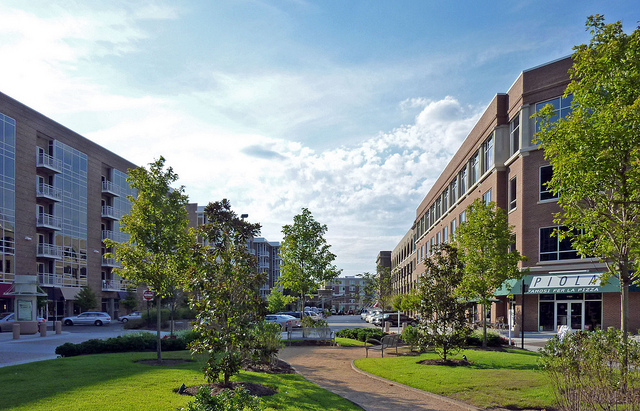Code Green Solutions


LEED ND project, East 54, in Chapel Hill, NC
LEED for Neighborhood Development (ND) is a relatively young LEED certification system that aims to build smarter, healthier and more connected neighborhoods that reduce negative environmental impacts and lead to fewer vehicle miles traveled (VMT). So, does it work? Few LEED-ND projects have been certified at the final stage of development and therefore post-occupancy surveys are currently not a logical approach to measuring the success of LEED-ND. However, the ability of LEED-ND to reduce VMT by increasing walking and the use of public transit can be estimated through the use of models.
A group of researchers, including Reid Ewing, Director of the Metropolitan Research Center at the University of Utah, approached this by developing a model based on 239 mixed-use developments to estimate total VMT per person. The results of their model, published in the Journal of Planning Education and Research, find that design, destination accessibility, demographics, diversity and distance to transit impact an individual’s mode of transportation. This suggests the neighborhood characteristics that are encouraged by LEED-ND would actually be able to shape individual behavior.
To test this, the researchers applied the model to a selection of LEED-ND pilot projects and found that LEED certified neighborhoods have a significantly lower average VMT per person trip when compared to the regional average. The VMT per person trip among LEED projects ranges from just 24% of the regional average for Constitution Square in DC to 60% of the regional average for Napa Pipe in Northern California. This is significant not only from an environmental standpoint but from a health standpoint as well.
The impact on health is multifold. While decreasing VMT decreases automobile emissions and air pollutants that harm human health, it also provides the opportunity for increased physical activity and overall well-being. Research suggests that compact communities with lower commute times are associated with increased social capital. Additionally, lower VMT per person trip would lead to less exposure to the mental stress associated with driving, such as road rage, and lower the risk for automobile accidents, one of the leading causes of death in the U.S. When an individual is able to walk or use public transit to get to their destination, it is arguably better for their health than driving in a car. Of course the caveat here is that just because an individual is offered the opportunity to be physically active doesn’t mean that they will do so. However by making the healthy and environmentally friendly choices also the easiest ones, LEED-ND possesses the ability to nudge individual behaviors in a manner that will lead to positive outcomes for the individual as well as for the environment.